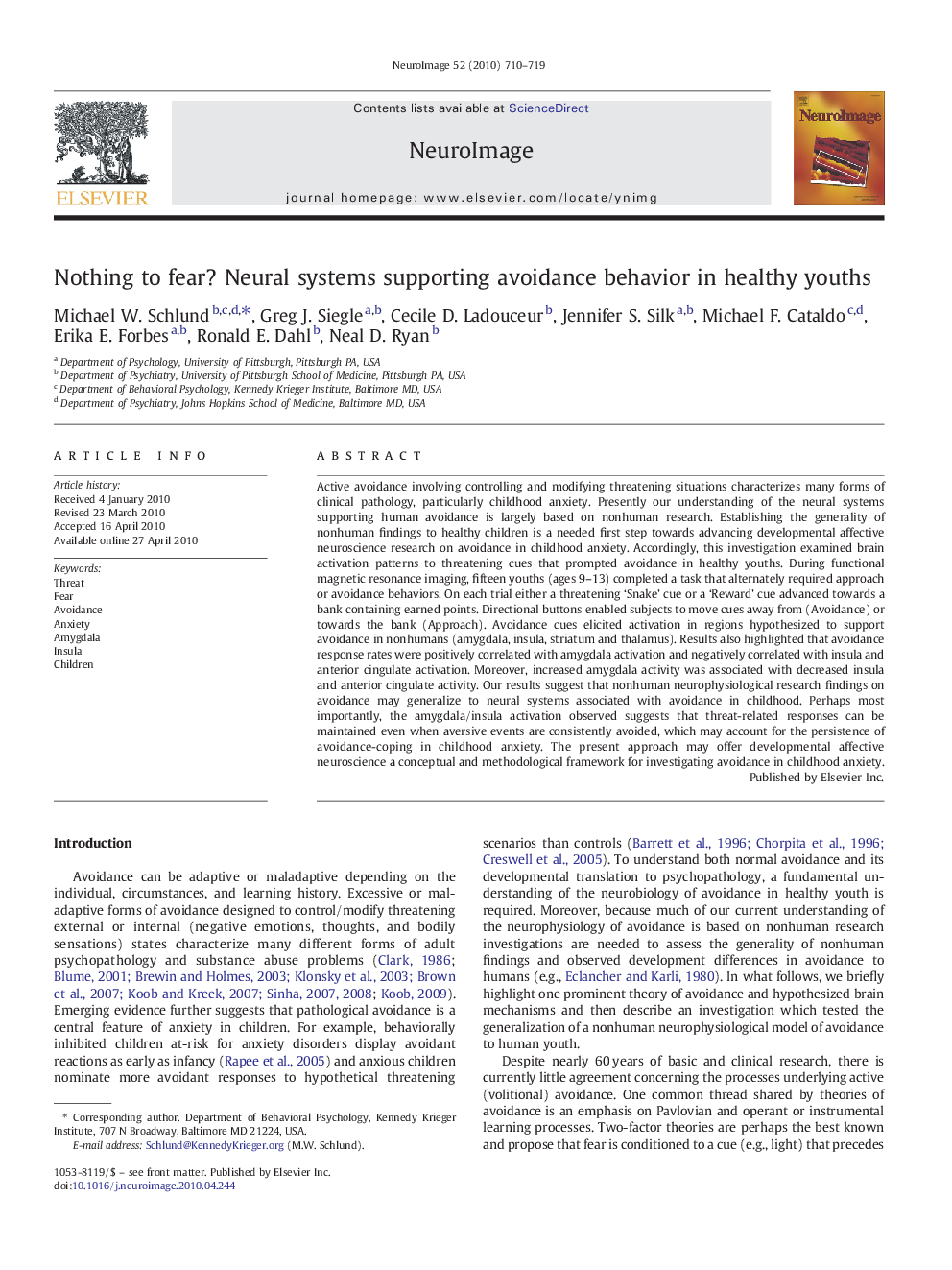| Article ID | Journal | Published Year | Pages | File Type |
|---|---|---|---|---|
| 3072198 | NeuroImage | 2010 | 10 Pages |
Active avoidance involving controlling and modifying threatening situations characterizes many forms of clinical pathology, particularly childhood anxiety. Presently our understanding of the neural systems supporting human avoidance is largely based on nonhuman research. Establishing the generality of nonhuman findings to healthy children is a needed first step towards advancing developmental affective neuroscience research on avoidance in childhood anxiety. Accordingly, this investigation examined brain activation patterns to threatening cues that prompted avoidance in healthy youths. During functional magnetic resonance imaging, fifteen youths (ages 9–13) completed a task that alternately required approach or avoidance behaviors. On each trial either a threatening ‘Snake’ cue or a ‘Reward’ cue advanced towards a bank containing earned points. Directional buttons enabled subjects to move cues away from (Avoidance) or towards the bank (Approach). Avoidance cues elicited activation in regions hypothesized to support avoidance in nonhumans (amygdala, insula, striatum and thalamus). Results also highlighted that avoidance response rates were positively correlated with amygdala activation and negatively correlated with insula and anterior cingulate activation. Moreover, increased amygdala activity was associated with decreased insula and anterior cingulate activity. Our results suggest that nonhuman neurophysiological research findings on avoidance may generalize to neural systems associated with avoidance in childhood. Perhaps most importantly, the amygdala/insula activation observed suggests that threat-related responses can be maintained even when aversive events are consistently avoided, which may account for the persistence of avoidance-coping in childhood anxiety. The present approach may offer developmental affective neuroscience a conceptual and methodological framework for investigating avoidance in childhood anxiety.
